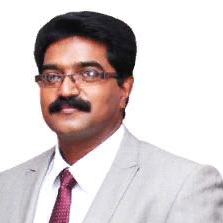
Aju D
Work place: SCOPE, Vellore Institute Technology, Vellore, TN, India
E-mail: daju@vit.ac.in
Website:
Research Interests: Image Manipulation, Image Compression, Computer Graphics and Visualization, Image Processing, Medical Image Computing
Biography
Dr. Aju. D received his PhD. in Computer Science and Engineering from VIT University, Vellore, India. He received his M.Tech. degree in Computer Science and IT from Manonmaniam Sundaranar University, Tirunelveli. He received his M.C.A degree from Madras University, India. Presently, he is working as Associate Professor at VIT University in the department of Computer Science and Engineering. He has published 30 research articles in different reputed international peer-reviewed journals. And, he has served as reviewer for few international peer-reviewed journals. He is having more than 15 years of teaching and research experience. Consecutively, he has received research awards from 2014 to 2019 for his outstanding contribution towards research and publication at VIT University. His area of interest includes Digital Image Processing, Medical Imaging, Computer Graphics, Multimedia Systems and Digital Forensics.
Author Articles
A Reinforcement Learning-based Offload Decision Model (RL-OLD) for Vehicle Number Plate Detection
By Yadavendra Atul Sakharkar Mrinalini Singh Kakelli Anil Kumar Aju D
DOI: https://doi.org/10.5815/ijem.2021.06.02, Pub. Date: 8 Dec. 2021
Vehicle license number plate detection is essential for road safety and traffic management. Many existing systems have been proposed to achieve high detection precision without optimization of computer resources. Existing models have not preferred to use devices like smartphones or surveillance cameras because of high latency, data loss, bandwidth costs, and privacy. In this article, we propose a model of unloading decisions based on reinforcement learning (RL-OLD) for recognition and detection of vehicle license plates for high precision with optimization of computer resources. The proposed model detected different categories of vehicle registration plates by effectively utilizing edge computing. Our model can choose either the compute-intensive model of the cloud or the lightweight model of the local system based on the properties of the number plate. This approach has achieved high accuracy, limited data loss, and limited latency.
[...] Read more.Other Articles
Subscribe to receive issue release notifications and newsletters from MECS Press journals